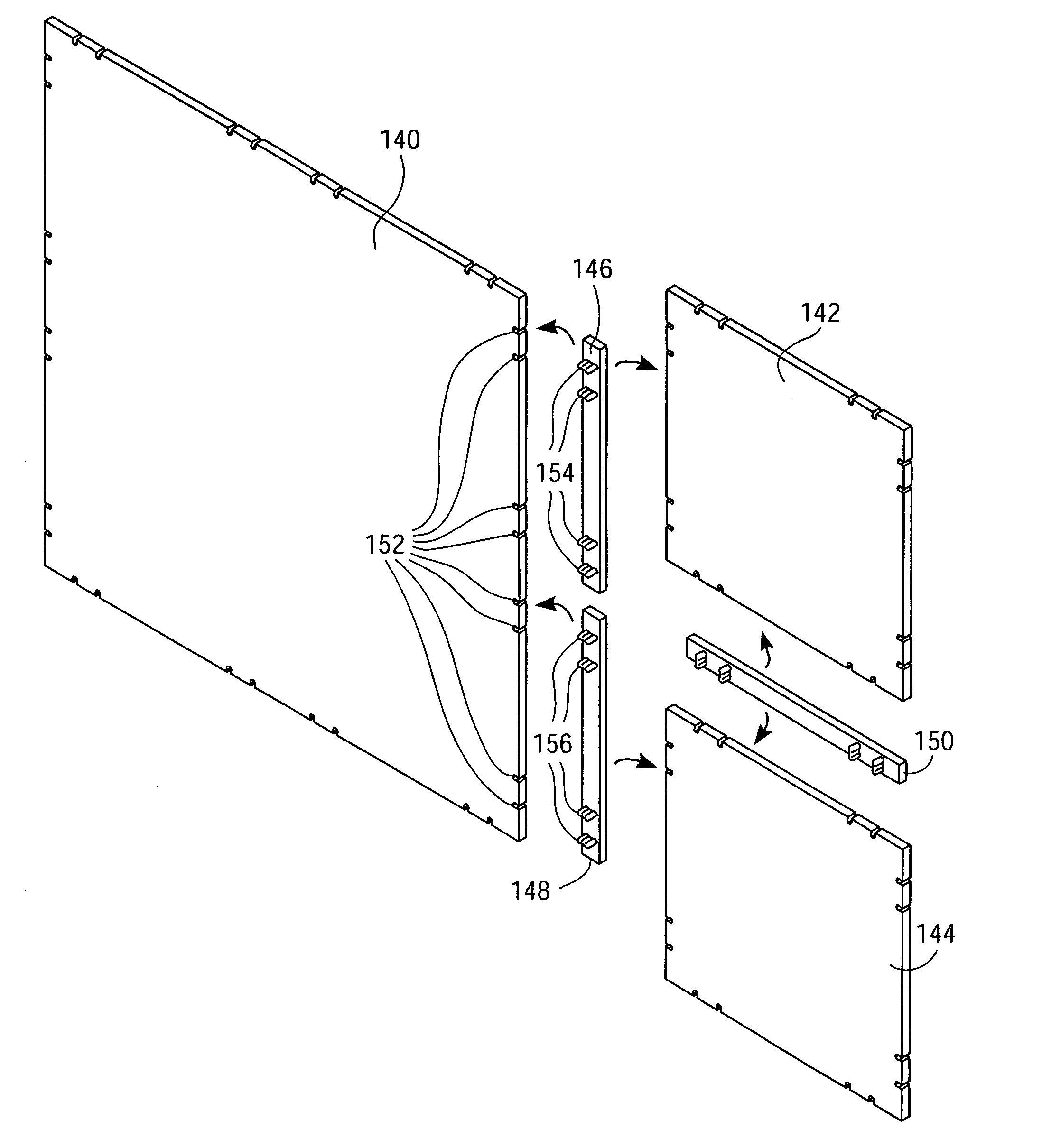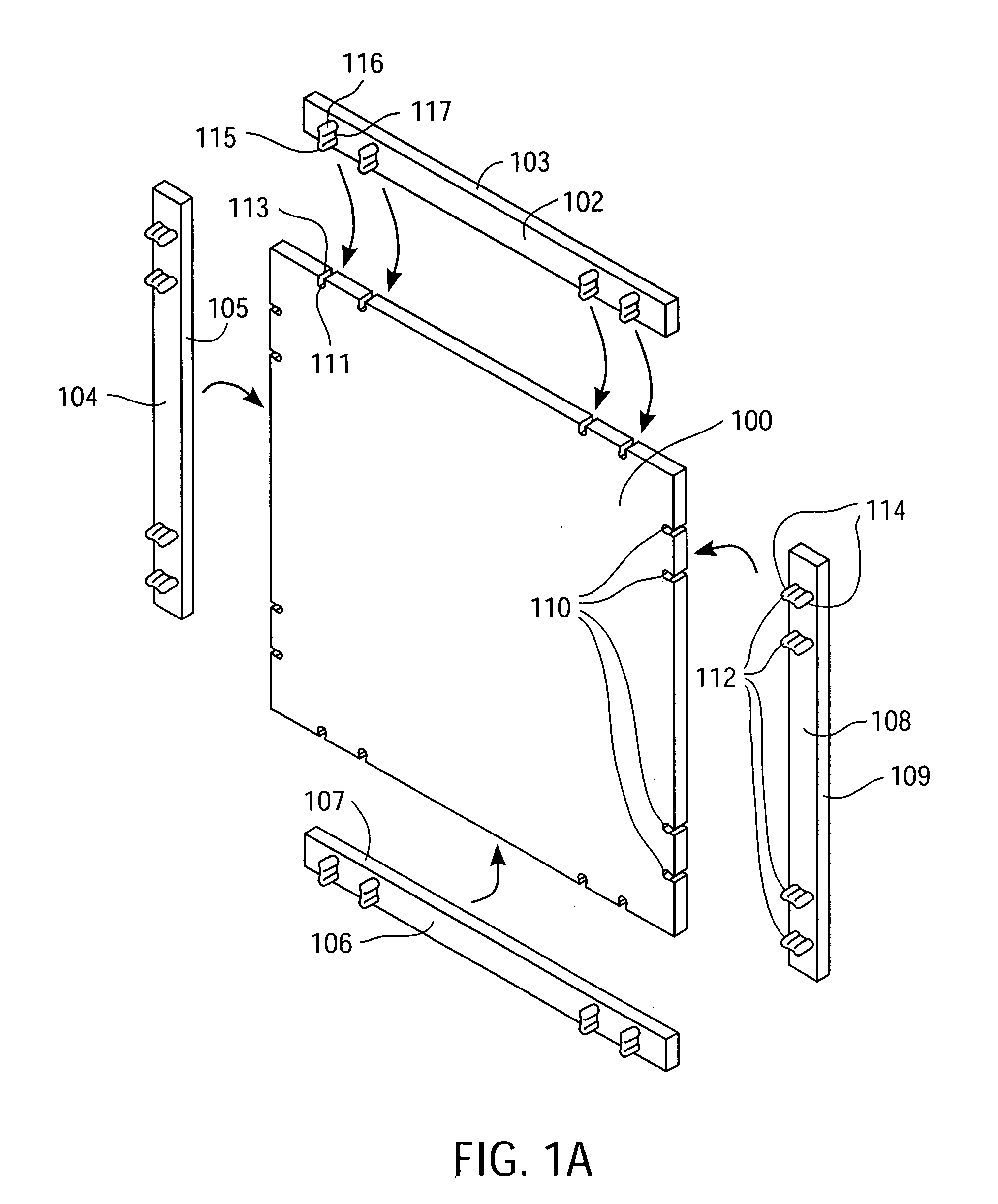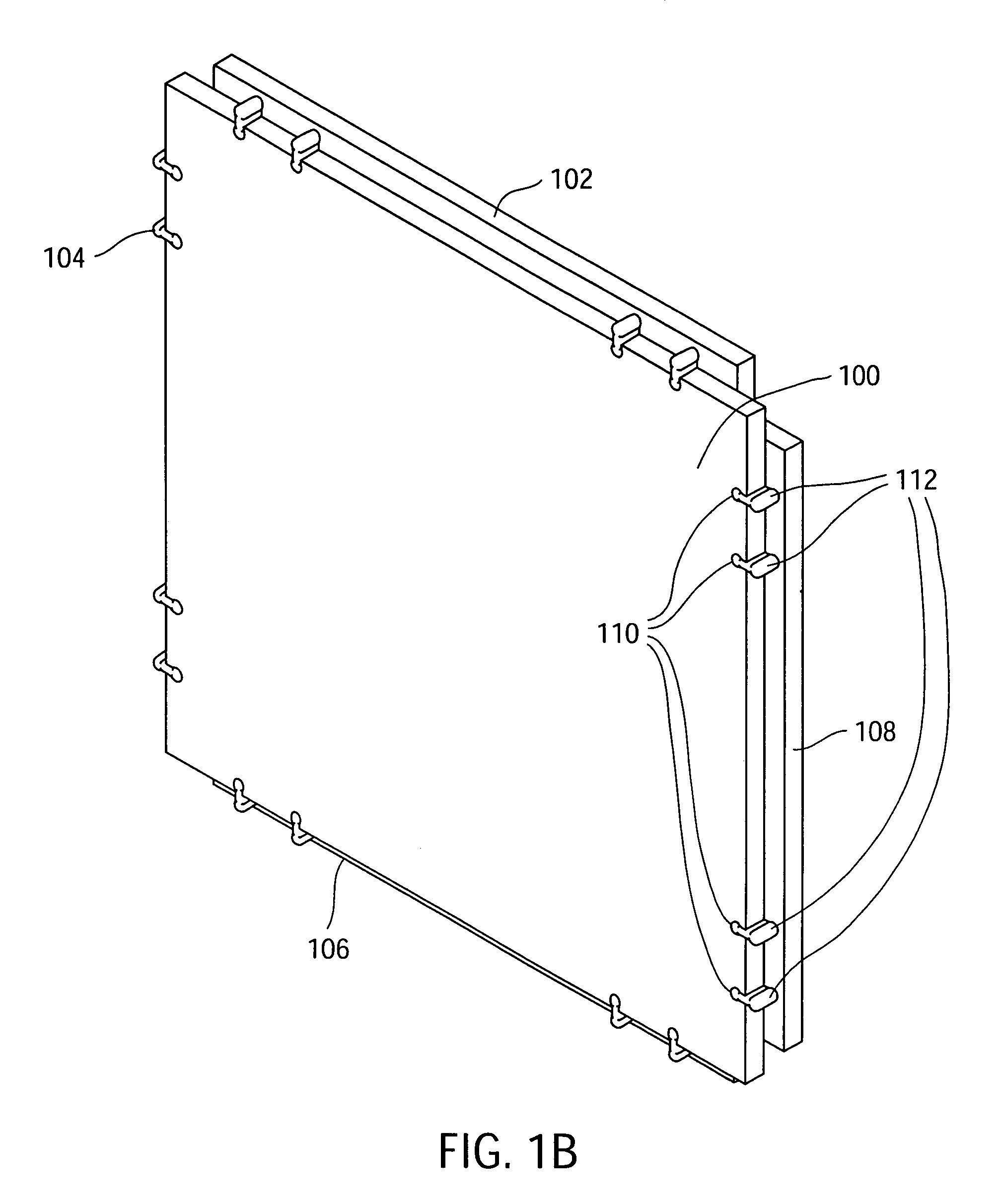Electronic circuit building block
- Summary
- Abstract
- Description
- Claims
- Application Information
AI Technical Summary
Benefits of technology
Problems solved by technology
Method used
Image
Examples
Embodiment Construction
[0042]The embodiments of the present invention will be described below with reference to the accompanying drawings. Like reference numerals are used for like elements in the accompanying drawings.
[0043]FIG. 1A is a perspective view of an electronic circuit board module (“Electronic Circuit Building Block”) 100 and four mechanical bridge connectors 102, 104, 106, 108 before they are connected to the Electronic Circuit Building Block™100, according to one embodiment of the present invention. In one embodiment, the Electronic Circuit Building Block 100 preferably includes four female interlocking elements (slots) 110 on each edge, since having four female interlocking elements 110 on each edge provides strength for rigidly interlocking the mechanical bridge connectors 102, 104, 106, and 108 with the Electronic Circuit Building Block 100. However, one or more female interlocking elements 110 may be used on each edge of the Electronic Circuit Building Block 100. The female interlocking e...
PUM
| Property | Measurement | Unit |
|---|---|---|
| Angle | aaaaa | aaaaa |
| Electrical conductivity | aaaaa | aaaaa |
| Shape | aaaaa | aaaaa |
Abstract
Description
Claims
Application Information
 Login to View More
Login to View More - R&D
- Intellectual Property
- Life Sciences
- Materials
- Tech Scout
- Unparalleled Data Quality
- Higher Quality Content
- 60% Fewer Hallucinations
Browse by: Latest US Patents, China's latest patents, Technical Efficacy Thesaurus, Application Domain, Technology Topic, Popular Technical Reports.
© 2025 PatSnap. All rights reserved.Legal|Privacy policy|Modern Slavery Act Transparency Statement|Sitemap|About US| Contact US: help@patsnap.com



